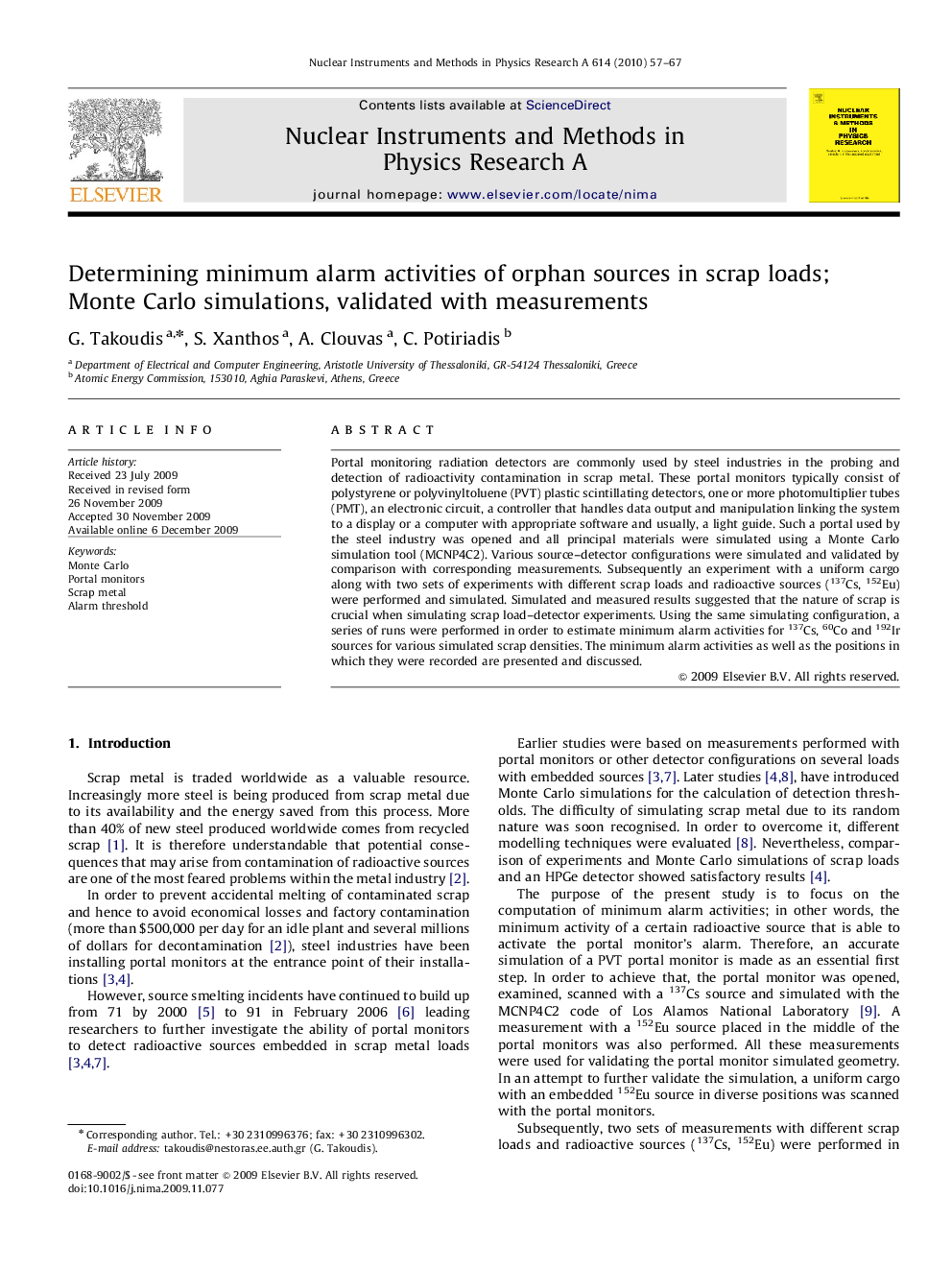| Article ID | Journal | Published Year | Pages | File Type |
|---|---|---|---|---|
| 1826906 | Nuclear Instruments and Methods in Physics Research Section A: Accelerators, Spectrometers, Detectors and Associated Equipment | 2010 | 11 Pages |
Abstract
Portal monitoring radiation detectors are commonly used by steel industries in the probing and detection of radioactivity contamination in scrap metal. These portal monitors typically consist of polystyrene or polyvinyltoluene (PVT) plastic scintillating detectors, one or more photomultiplier tubes (PMT), an electronic circuit, a controller that handles data output and manipulation linking the system to a display or a computer with appropriate software and usually, a light guide. Such a portal used by the steel industry was opened and all principal materials were simulated using a Monte Carlo simulation tool (MCNP4C2). Various source-detector configurations were simulated and validated by comparison with corresponding measurements. Subsequently an experiment with a uniform cargo along with two sets of experiments with different scrap loads and radioactive sources (137Cs, 152Eu) were performed and simulated. Simulated and measured results suggested that the nature of scrap is crucial when simulating scrap load-detector experiments. Using the same simulating configuration, a series of runs were performed in order to estimate minimum alarm activities for 137Cs, 60Co and 192Ir sources for various simulated scrap densities. The minimum alarm activities as well as the positions in which they were recorded are presented and discussed.
Related Topics
Physical Sciences and Engineering
Physics and Astronomy
Instrumentation
Authors
G. Takoudis, S. Xanthos, A. Clouvas, C. Potiriadis,
